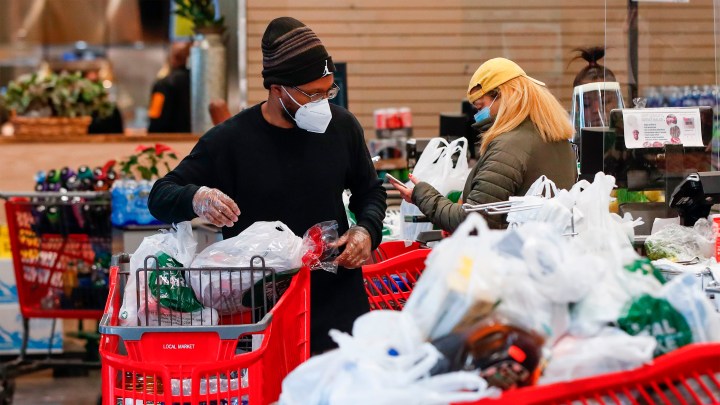
Fed’s Beige Book in focus as conversation about diversity continues
Fed’s Beige Book in focus as conversation about diversity continues

It’s not on top of the bestseller lists, but the Federal Reserve’s Beige Book routinely generates headlines. The Beige Book is an analysis of the economy based on anecdotal information from the 12 regional Fed banks scattered across the country. It comes out eight times a year, and it’s riveting reading if you’re an economist.
“There was a point at which I was consuming it as if it were a miniseries,” said Lisa Cook, an economist at Michigan State University.
But even though Cook loves reading the Beige Book, she said it can be improved.
“I think it is a view of the economy,” she explained. “I think it could be a more representative view of the regional economy … with a greater diversity of sources.”
Cook is talking about the people researchers at the regional Fed banks reach out to as they try to take the pulse of their local economies. The Beige Book starts out with an overview of the national economy. Then there’s a chapter from each of the 12 regional Fed banks — a summary of their local economies, including retail and car sales, employment and wages. If you’ve ever skimmed through the Beige Book — and I know you have — you’ll notice that most of its sources are business owners and CEOs, or contacts at manufacturers, car dealerships and retailers.
“It’s written from the perspective of people selling products, not the people buying the products, consumers,” said Andrew Levin, a former Fed economist now teaching economics at Dartmouth College. “It doesn’t really reflect people of color — it’s just missing a lot of the reality of what’s happening to real people in the real world in ordinary communities.”
Levin said a recent Census Bureau survey found that a quarter of families in rental housing were worried they might not be able to pay the next month’s rent. By contrast, the Beige Book just talked about landlords worried their tenants would miss a rent payment. I reached out to all 12 regional Fed banks to get their take on this. Some never responded. Others said no comment. Two gave me interviews. I spoke first with Joe Mahon, a regional economist at the Federal Reserve Bank of Minneapolis.
“First of all, I would say this is still a work in progress,” Mahon explained. “We always know we can do a better job in this regard.”
Mahon said the Minneapolis Fed did do a one-time separate survey of women and minority-owned businesses, partly in Spanish. He said if you talk to, say, retailers, you get a reading on all of their customers at once. But surveying individual consumers for the Beige Book? He says that’s a tall order.
“If you’re talking about a focus group of a few dozen people out of an economy of how many millions of households, it’s a daunting challenge,” he said. “It’s certainly something that would be worth doing.”
Over at the Richmond, Virginia, Fed, regional economist Sonya Ravindranath Waddell said they also focus on talking to businesses for their part of the Beige Book, and they are also trying to broaden their business contacts. They’re looking at diversifying roundtables they use as sources for the Beige Book.
“I know that we have some community college representation,” she said. “We have economic development authorities. We have chambers — or like regional business alliances.”
The Fed doesn’t ignore consumers. There is a national consumer survey but it doesn’t come out as often as the Beige Book, and it doesn’t have the same local detail. If the regional Fed banks wanted to reach out to consumers, Levin, the former Fed economist, said they could band together to create a poll of households for the Beige Book. And Michigan State economist Cook said if the job’s too big, it can always be subcontracted out.
There’s a lot happening in the world. Through it all, Marketplace is here for you.
You rely on Marketplace to break down the world’s events and tell you how it affects you in a fact-based, approachable way. We rely on your financial support to keep making that possible.
Your donation today powers the independent journalism that you rely on. For just $5/month, you can help sustain Marketplace so we can keep reporting on the things that matter to you.












